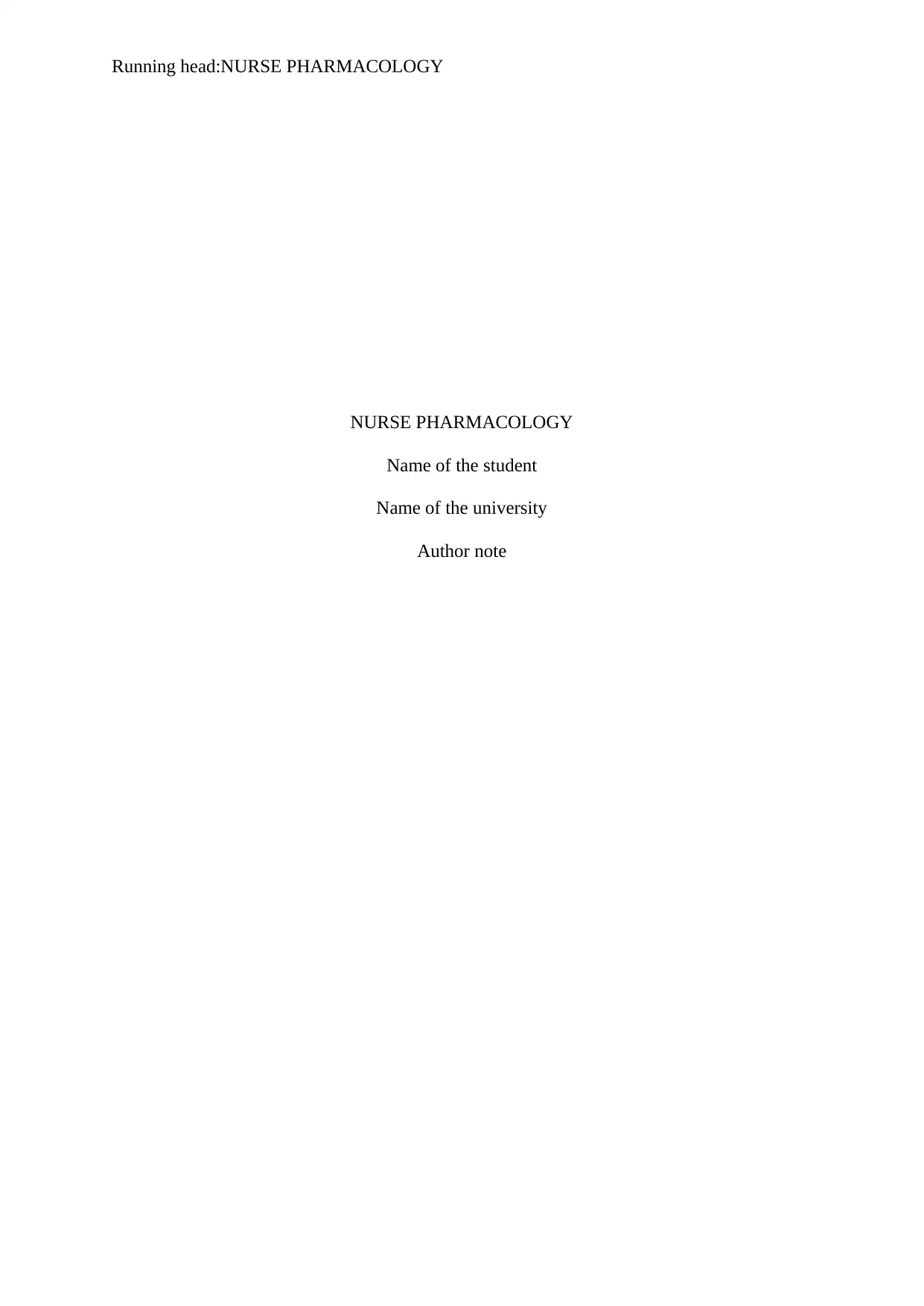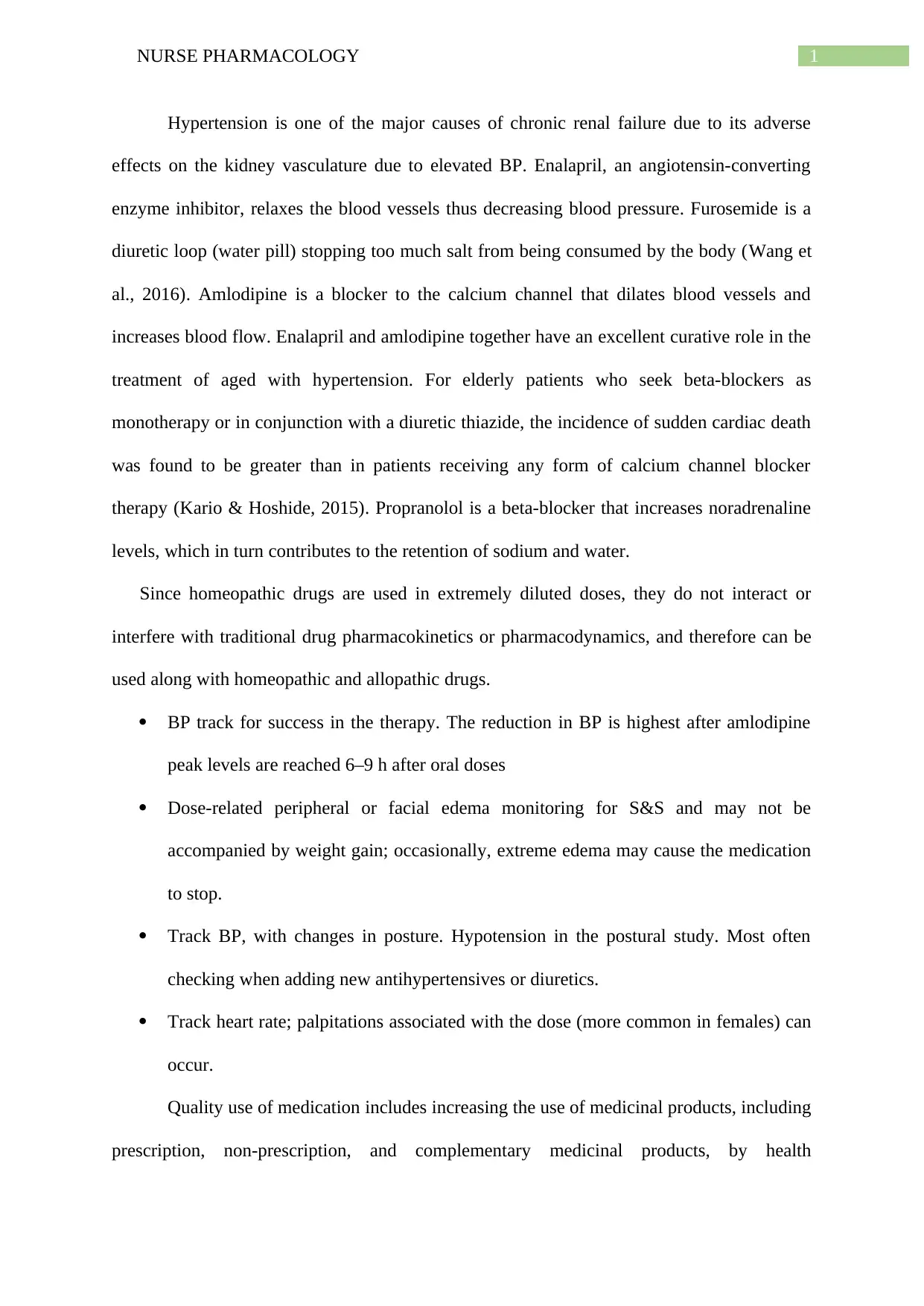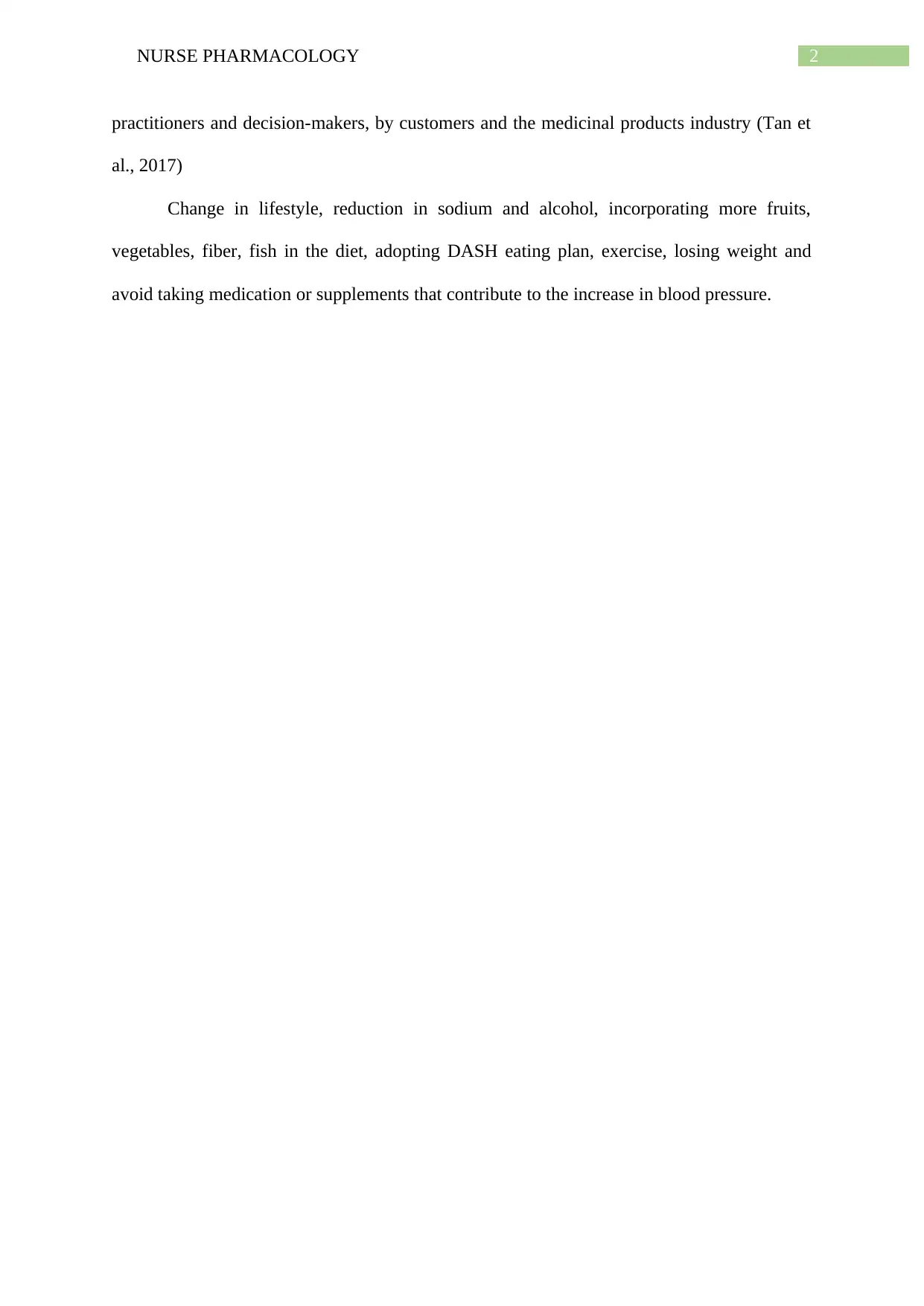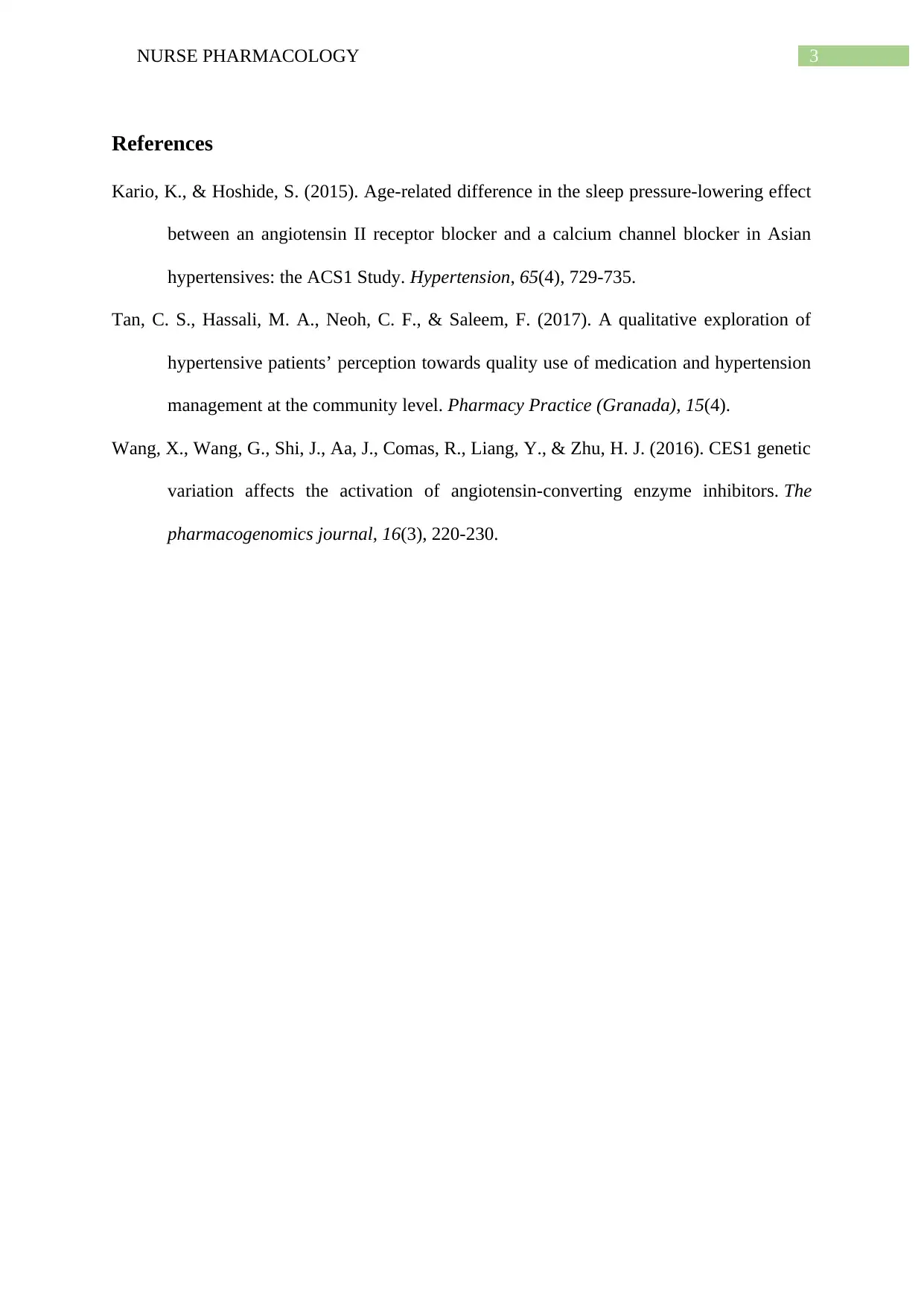Pharmacology Report: Hypertension Treatment with Medication
VerifiedAdded on 2022/09/06
|4
|569
|18
Report
AI Summary
This report delves into the pharmacology of hypertension treatment, focusing on the use of various medications. It highlights the role of Enalapril, an angiotensin-converting enzyme inhibitor, and Amlodipine, a calcium channel blocker, in managing blood pressure. The report also discusses the use of Furosemide, a diuretic, and beta-blockers, such as Propranolol, in the context of hypertension. It emphasizes the importance of monitoring blood pressure and considering lifestyle changes, such as dietary adjustments and exercise, in conjunction with medication. Furthermore, it explores the quality use of medication and the potential interactions between different types of drugs, including homeopathic and allopathic medications. The report references relevant studies and research to support its findings, providing a comprehensive overview of hypertension management through pharmacological interventions.
1 out of 4











![[object Object]](/_next/static/media/star-bottom.7253800d.svg)